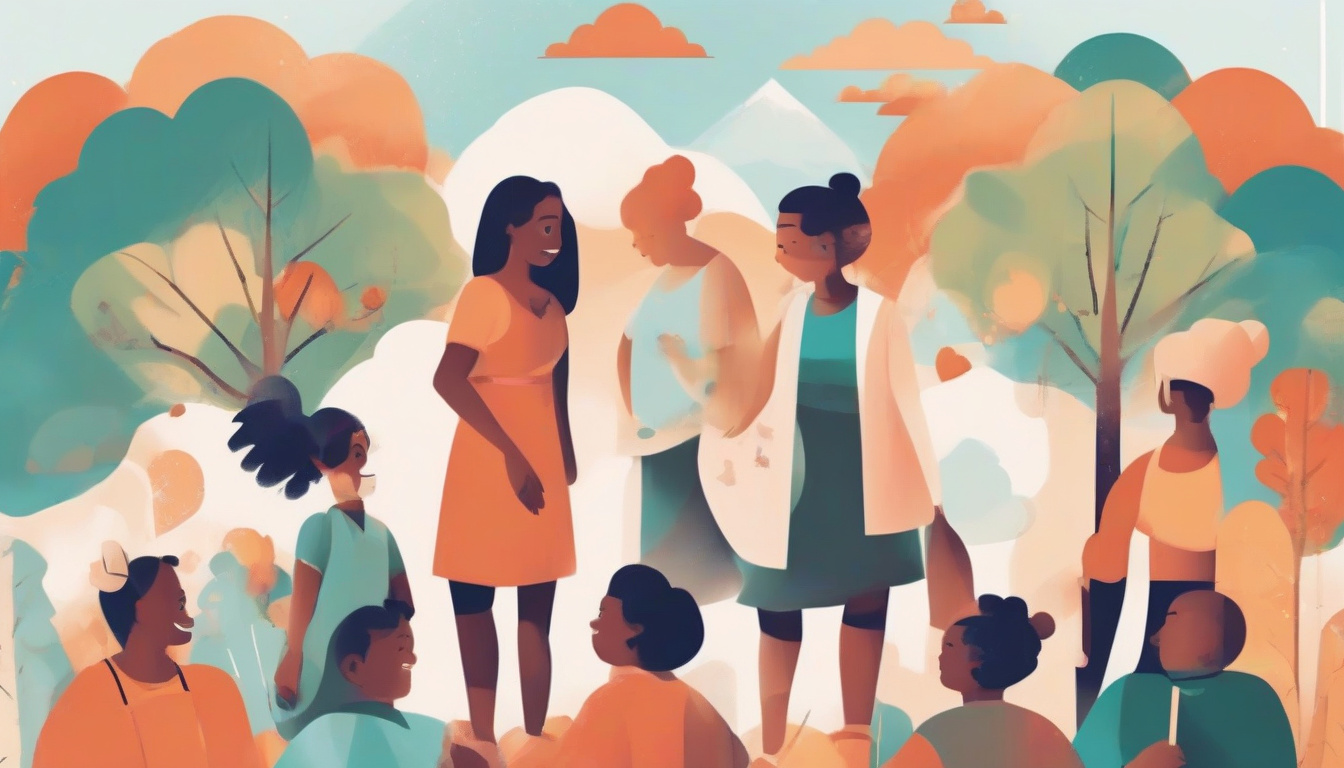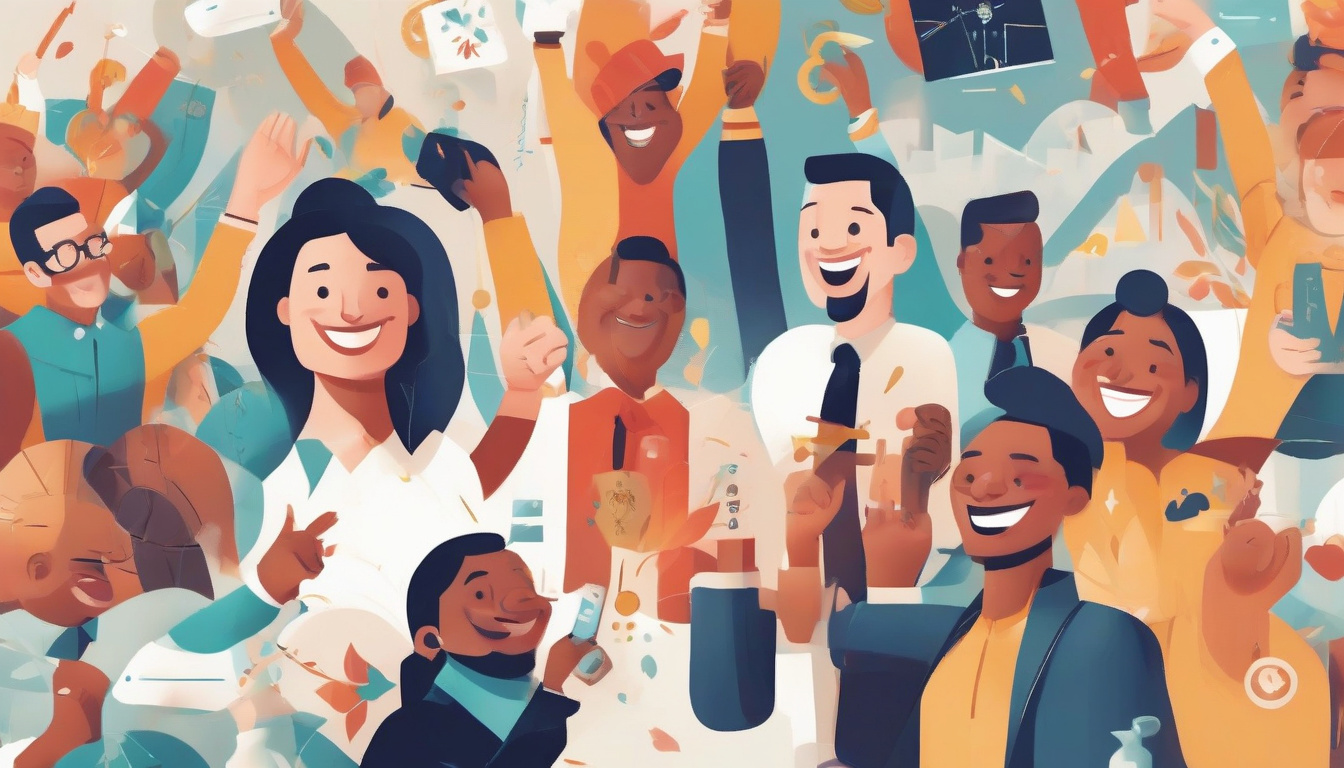Unlock Financial Freedom: Discover the Best Free Government Debt Relief Programs Today
Managing debt can often feel like an uphill battle, leaving many individuals and families feeling overwhelmed and trapped in a cycle of anxiety. Fortunately, there is hope on the horizon. In the United States, free government debt relief programs have emerged as a beacon of light for those struggling to regain financial control. These programs are designed to assist citizens in navigating their debt challenges without substantial costs. In this comprehensive guide, we will delve into the world of debt relief, exploring what these free government initiatives entail, the various types available, and who qualifies for assistance. Additionally, we will provide a practical step-by-step approach to accessing these programs, ensuring you have the tools you need to take charge of your financial future. Moreover, we’ll share inspiring success stories of individuals who have leveraged these resources to achieve financial freedom. If you’re ready to explore your options and uncover the potential of government assistance, read on!

Key Takeaways
- Debt relief programs can provide essential support for those struggling with financial burdens.
- There are various types of free government debt relief programs tailored for different needs.
- Eligibility criteria for these programs vary, making it important to research what you qualify for.
- Accessing these debt relief programs typically involves a simple step-by-step application process.
- Many individuals have successfully achieved financial freedom through the available government programs.
Understanding Debt Relief: What Are Free Government Programs?
Free government debt relief programs offer assistance to individuals who are struggling to manage their debt. These programs are designed to provide support and strategies for reducing debt burdens through various methods, including debt management plans, budgeting assistance, and education about better financial practices. Some of the most common types of programs include credit counseling services that help negotiate with creditors, government-sponsored debt consolidation loans, and educational workshops aimed at teaching consumers about financial literacy. The overarching goal of these free programs is not only to help individuals clear their debts but also to instill knowledge and tools that lead to sustainable financial habits. It’s essential to realize that while many of these programs are offered for free, they may have specific eligibility requirements, and they can vary greatly depending on the state or region. By understanding what these programs entail, individuals can better navigate their options for achieving financial freedom.
Types of Free Government Debt Relief Programs Available
When it comes to managing overwhelming debt, many individuals and families may not be aware of the extensive free government debt relief programs available to them. These various programs are designed to assist those struggling with their financial obligations by providing resources, information, and in some cases, direct aid. Below are some of the main types of free government debt relief programs offered:
###
1. Debt Management Plans (DMPs)
Debt management plans simplify payment processes for consumers by negotiating lower interest rates with creditors. These are typically run by nonprofit credit counseling agencies funded by fees charged to creditors. Participants make a single monthly payment to the agency, which distributes the funds to creditors.
###
2. Government-Sponsored Financial Education Programs
These programs offer resources to educate consumers about budgeting, responsible credit usage, and debt management. Many local governmental and nonprofit organizations sponsor workshops or provide online courses that cover essential financial literacy topics to empower individuals to make informed financial choices.
###
3. Income-Driven Repayment Plans
For borrowers with federal student loans, income-driven repayment plans offer minimal monthly payments based on income. This can help alleviate financial strain while allowing borrowers to stay on track with their loan obligations without the threat of default.
###
4. Mortgage Forbearance Programs
In difficult economic times, federal and state governments may offer mortgage forbearance programs that allow homeowners to pause or reduce mortgage payments for a specific period. This relief can help individuals navigate temporary financial hardships without losing their homes.
###
5. Tax Relief Programs
Certain federal and state programs help alleviate tax burdens for low-income households. These programs may include payment plans, offers in compromise (settlements), or deferment options that provide temporary relief from tax obligations.
###
6. Bankruptcy Assistance
While not a direct program of relief, many governments provide resources and support for individuals considering bankruptcy as a last resort. Free consultations with legal experts can help people understand their options, including whether to file under Chapter 7 or Chapter 13 bankruptcy.
###
7. Local Government Assistance Programs
Local governments often have specific programs tailored to their communities that may include debt relief as part of a broader financial assistance package. These can range from grants to assist with specific debts to low-interest loans to help individuals pay off existing debt.
Each of these free government debt relief programs addresses specific needs and situations. For individuals struggling with debt, exploring these options can provide pathways to recovery and a more sustainable financial future.
‘Our greatest glory is not in never falling, but in rising every time we fall.’ – Confucius

Eligibility Criteria: Who Can Benefit From These Programs?
When exploring free government debt relief programs, it’s essential to understand the eligibility criteria that determine who can take advantage of these beneficial initiatives. Generally, these programs are designed for individuals and families facing financial hardships, which may be due to various circumstances such as job loss, medical emergencies, or overwhelming debt. To qualify, applicants often need to demonstrate their income level, typically showing that it falls below a certain threshold, which may vary depending on the specific program or local jurisdiction.
Moreover, some programs cater to specific demographics, including veterans, seniors, or low-income households, recognizing that these groups may face unique challenges. For example, veterans might have access to specialized resources like the VA’s financial assistance programs, while low-income families might qualify for state-sponsored debt relief initiatives. Supporting documentation such as tax returns, pay stubs, and proof of debts may be required to validate one’s financial situation.
In addition, applicants should have a clear understanding of the nature of their debt as well; many programs prioritize unsecured debt, such as credit cards or medical bills, rather than secured debt like mortgages or car loans. By understanding these criteria, individuals can better assess their eligibility and explore the financial relief that these government programs offer.
Step-by-Step Guide to Access Government Debt Relief Programs
## Step-by-Step Guide to Access Government Debt Relief Programs
Navigating the landscape of free government debt relief programs can initially seem daunting, but with the right approach, you can secure the help you need to alleviate financial burdens. Here’s a detailed guide to assist you through the process:
###
1. Assess Your Financial Situation
Begin by taking a comprehensive overview of your financial status. Make a list of all debts including credit cards, loans, and any other outstanding payments. Having a clear picture will help you understand what assistance you require.
###
2. Research Available Programs
Look for local and federal debt relief programs. Websites like the Federal Trade Commission (FTC) and Benefits.gov can provide a wealth of information about available programs. Key types include:
• Debt Forgiveness Programs: Designed for specific cases like education debt.
• Income-Driven Repayment Plans: For federal student loans, allowing repayments based on income.
• Credit Counseling Services: Non-profits that offer budget advice and can negotiate with creditors.
###
3. Gather Required Documentation
Compile necessary documents to apply for various programs. This typically includes proof of income, a list of debts, and any other relevant documentation (e.g., taxes). Ensuring you have everything ready will expedite your application process.
###
4. Apply for Programs
Once you have identified the program(s) you’re eligible for, it’s time to apply. Pay careful attention to deadlines and requirements. Each program may have specific application procedures, so follow the instructions closely.
###
5. Follow Up on Your Application
After submitting your application, it’s essential to follow up. Contact the agency to confirm they received your application and inquire about any next steps. Persistence can often lead to better outcomes.
###
6. Adhere to Program Guidelines
Once accepted into a program, ensure you understand its guidelines and obligations. For example, you may need to make consistent payments or participate in financial education workshops.
###
7. Evaluate Progress
Periodically assess your progress within the program. Look into adjustments if you find your financial situation changes. It’s important to stay proactive about your financial health.
By following these steps, you can effectively access free government debt relief programs and take control of your financial circumstances.

Success Stories: How People Achieved Financial Freedom Using These Programs
Many individuals have transformed their financial landscapes through the utilization of free government debt relief programs. Take, for instance, Sarah, a single mother of two who found herself overwhelmed by credit card debt and student loans totaling over $50,000. After exhausting all options, she applied for a government-sponsored debt relief program. The program not only helped her negotiate lower interest rates but also provided her with personalized budgeting advice. Within three years, she managed to pay off her debts completely, enabling her to save for her children’s education and her future.
Another inspiring story is that of John, a small business owner who faced financial difficulties during economic downturns. Despite his hard work, mounting debts threatened his business and personal finances. By exploring free government debt relief options, John was able to secure counseling services that helped him restructure his debts. He received invaluable assistance through a local nonprofit that collaborates with government programs, allowing him to create a sustainable repayment plan. Today, John not only runs a profitable business but also educates others in his community about the benefits of utilizing such programs.
These success stories illustrate the significant impact that free government debt relief programs can have on individuals seeking financial independence. They serve as compelling reminders that with the right resources and guidance, achieving financial freedom is not just a dream but an attainable reality.
Frequently Asked Questions
What are free government debt relief programs?
Free government debt relief programs are initiatives offered by government agencies to help individuals and families reduce or eliminate their debt burden. These programs can include debt management plans, counseling services, and financial education resources.
What types of free government debt relief programs are available?
Types of free government debt relief programs include debt management programs, loan forgiveness options, credit counseling services, and public service loan forgiveness for eligible professions.
Who is eligible for free government debt relief programs?
Eligibility for free government debt relief programs varies by program but generally includes criteria such as income level, types of debt, and the individual’s financial situation. Many programs are designed to help low-income individuals or those facing financial hardship.
How can I access free government debt relief programs?
To access free government debt relief programs, start by visiting official government websites, contacting local non-profit credit counseling agencies, or speaking with a financial advisor who can guide you through the process.
Are there success stories of individuals who benefited from these programs?
Yes, many individuals have successfully achieved financial freedom through free government debt relief programs. These success stories often highlight debt reductions, improved financial literacy, and the ability to rebuild credit.
